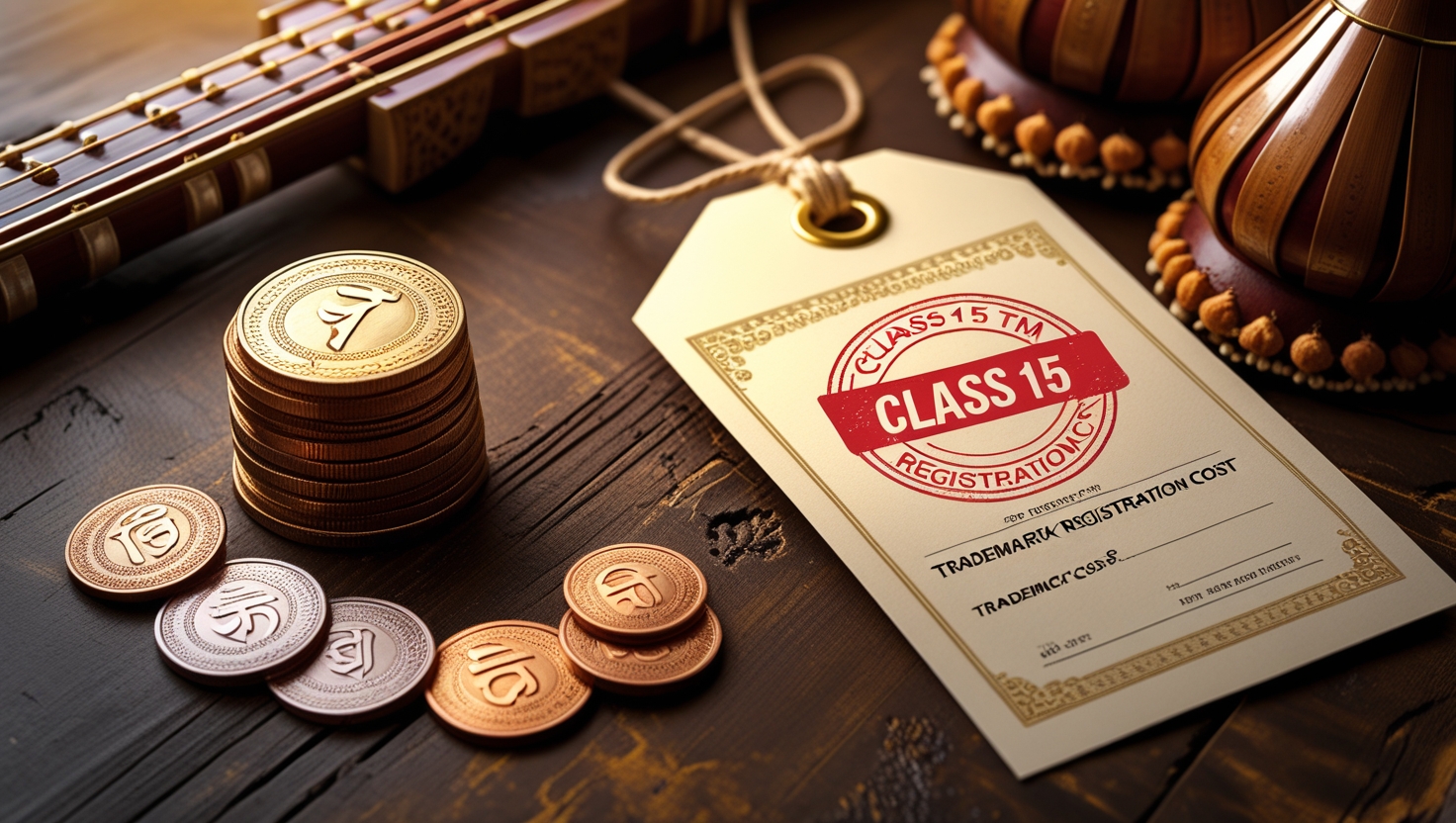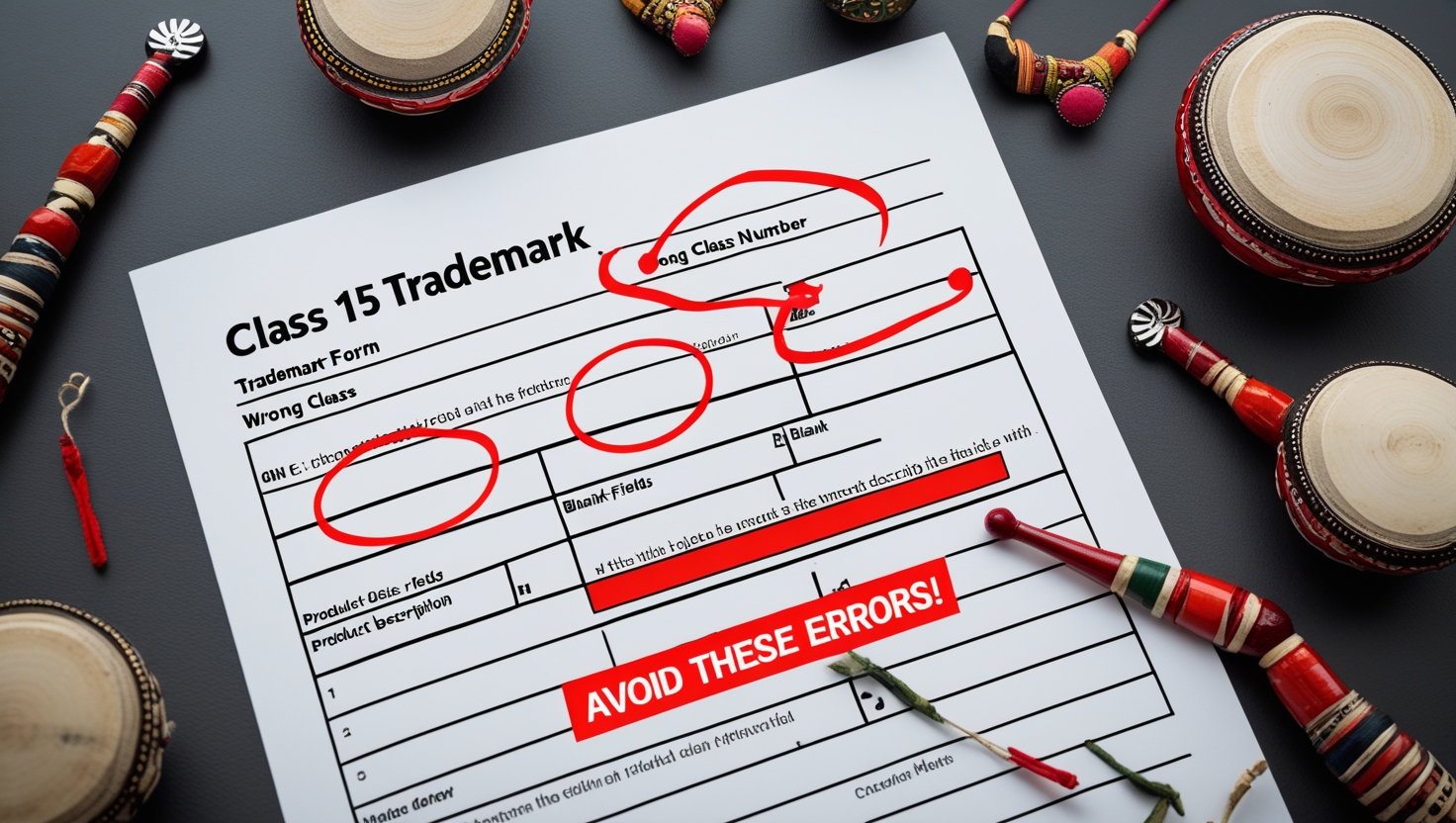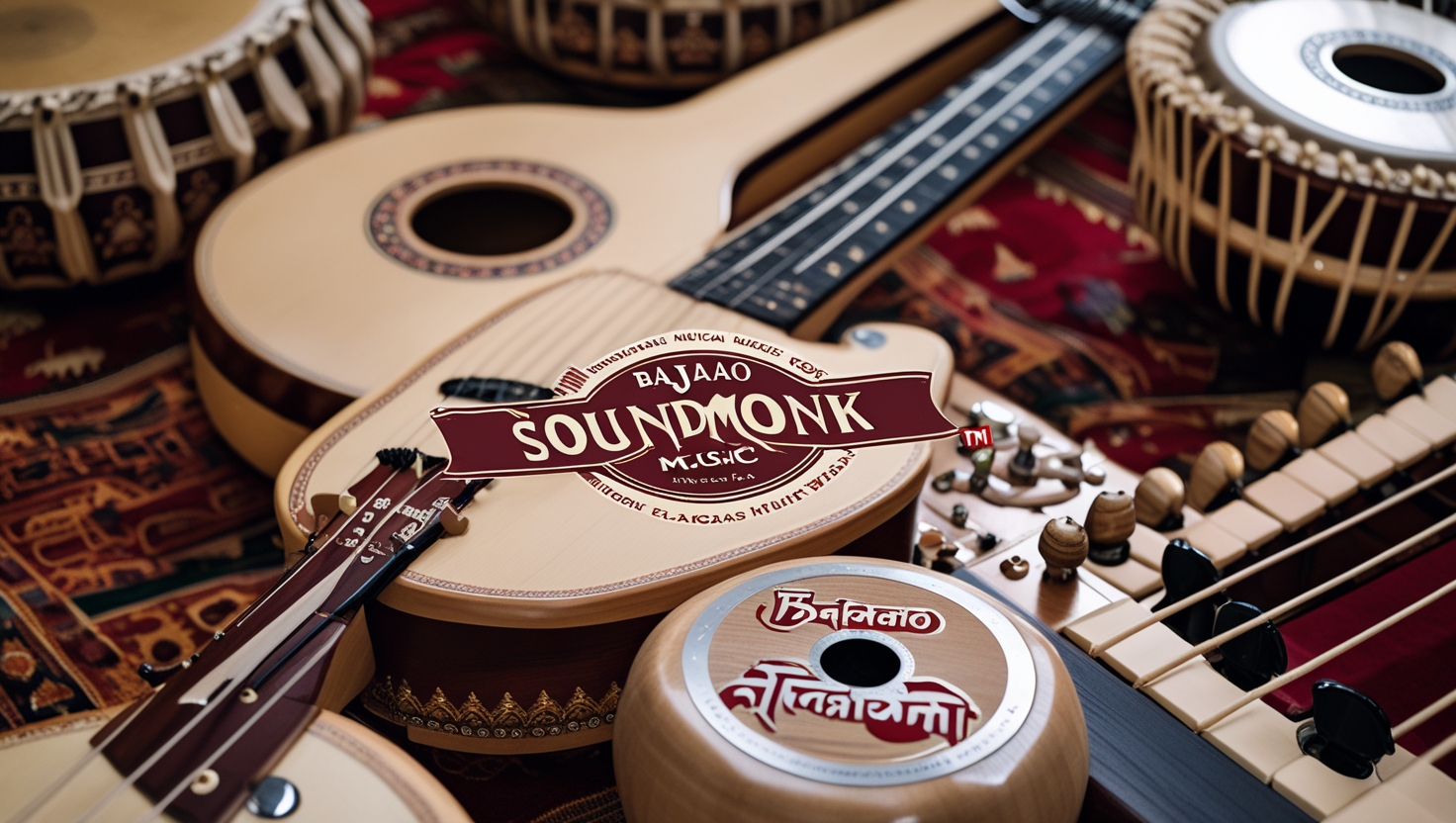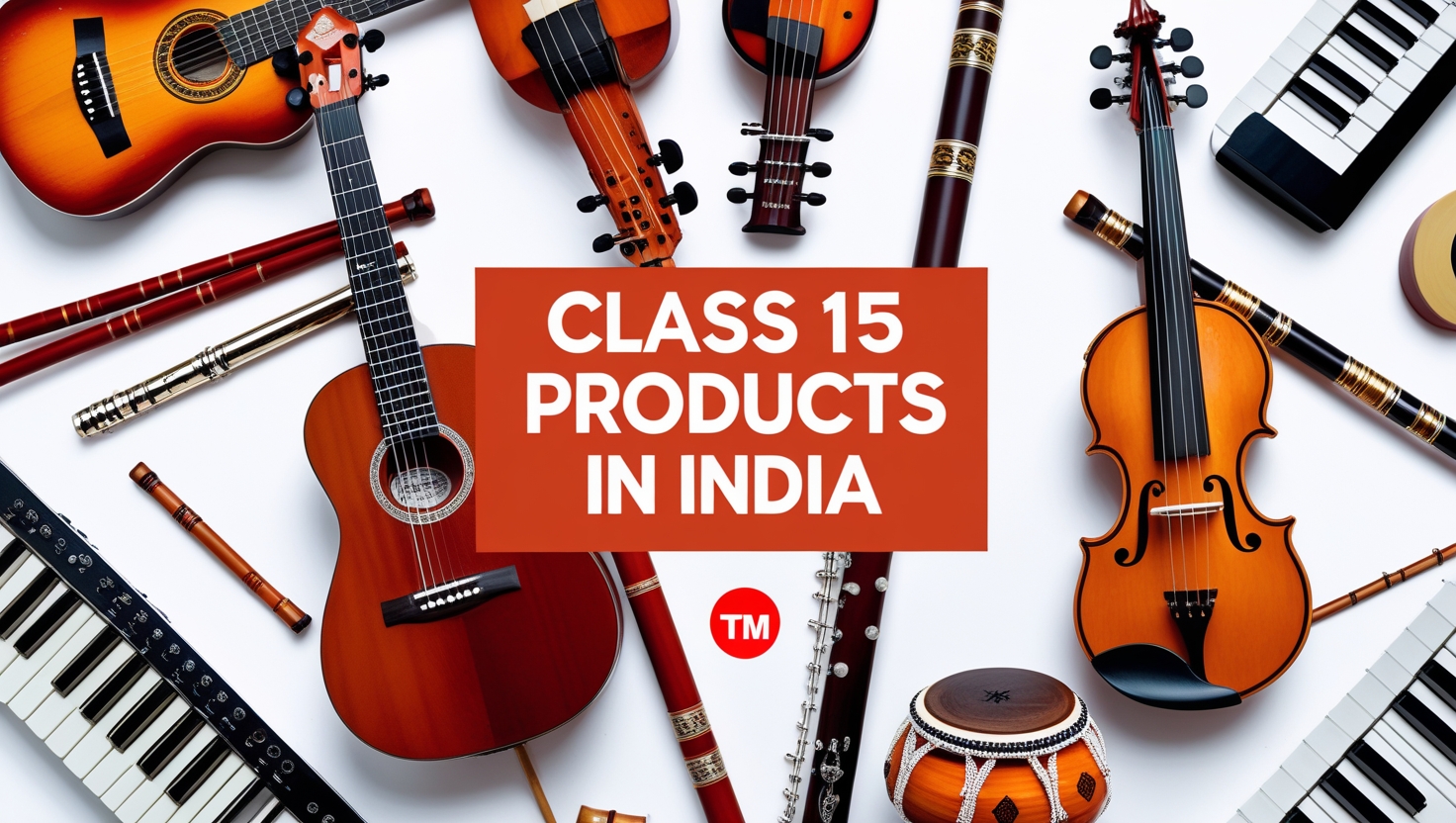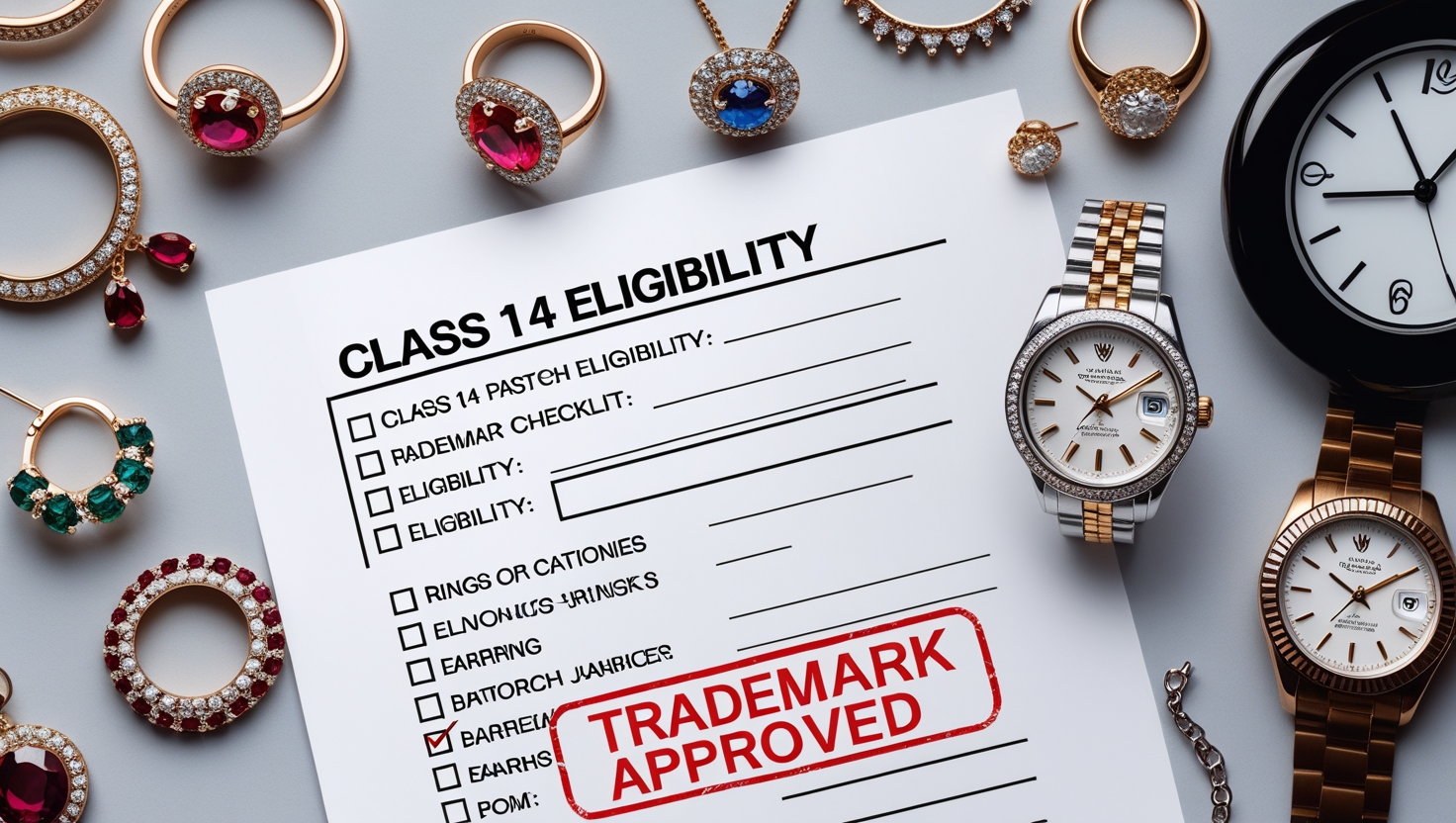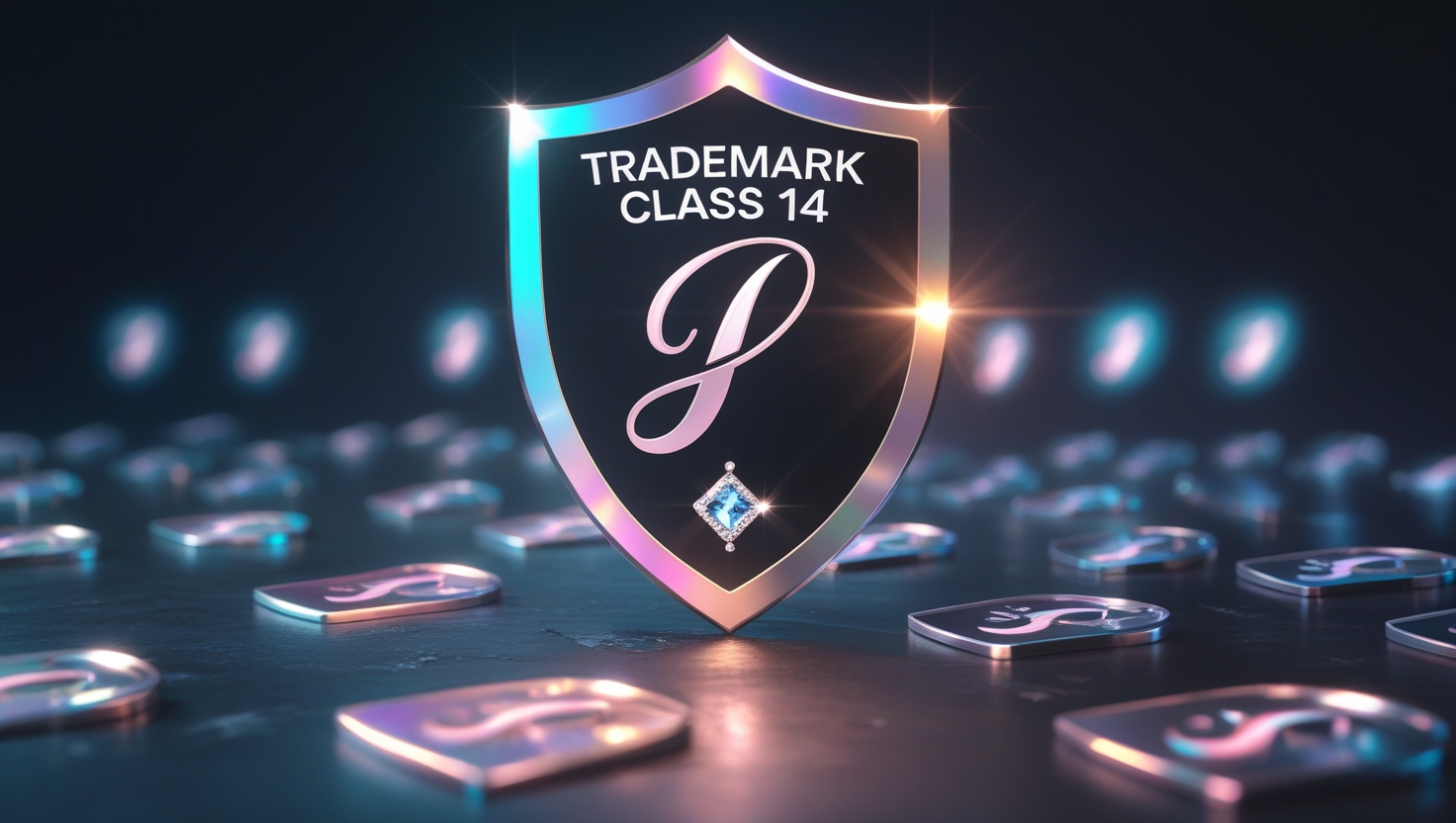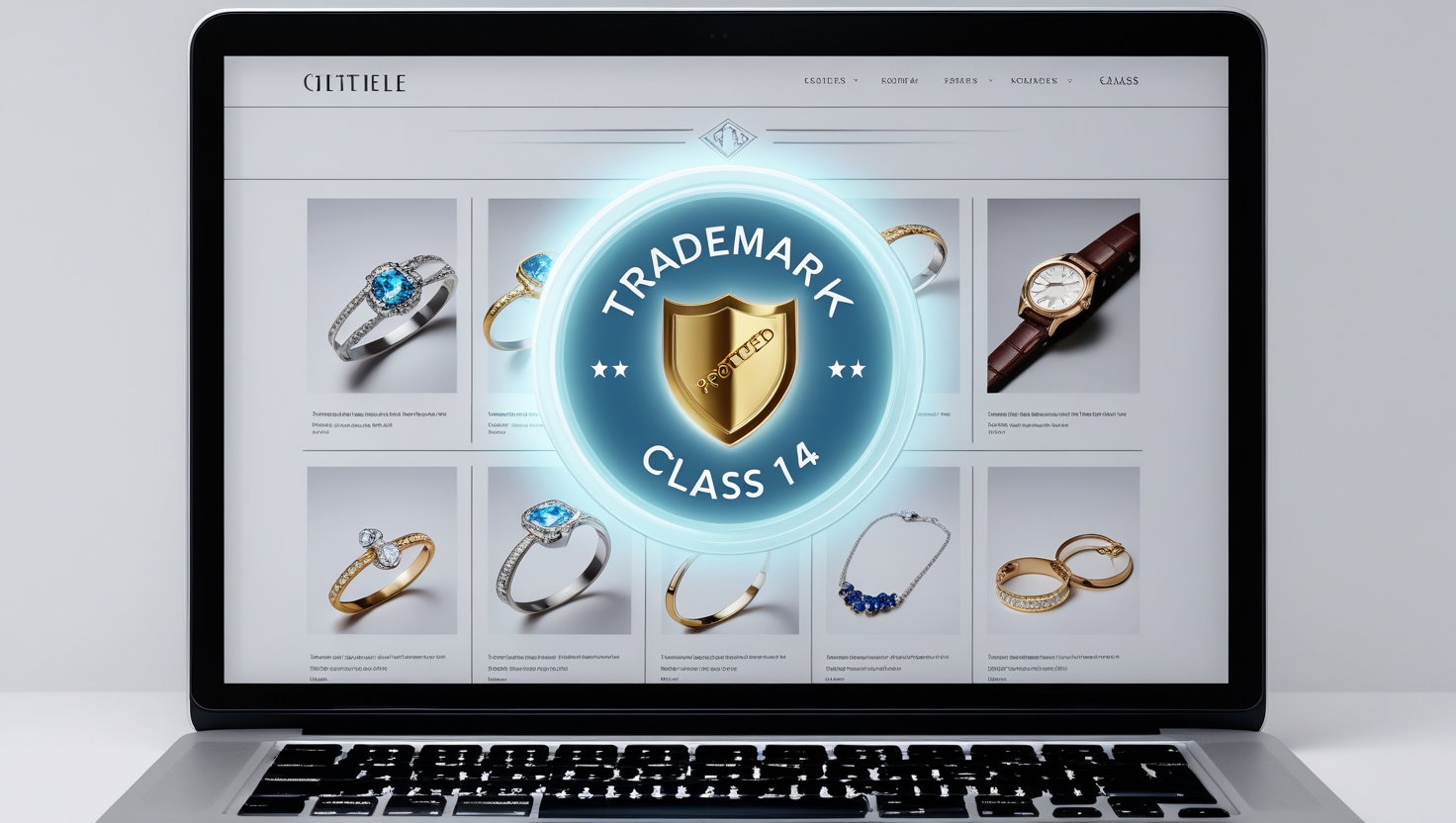Full Breakdown of Class 15 Trademark Registration Fees in India
When you manufacture, sell, or promote musical instruments or related products in India, securing your brand identity is critical. Trademark Class 15 under the NICE Classification protects trademarks associated with musical instruments, their parts, and accessories. Registering a trademark under Class 15 ensures your brand is legally protected from imitators and helps build consumer trust. But how much does it actually cost to register a trademark in this category?
In this blog, we will break down the complete cost of registering a trademark in Class 15 in India, covering government fees, professional charges, and additional expenses you might encounter during the process.
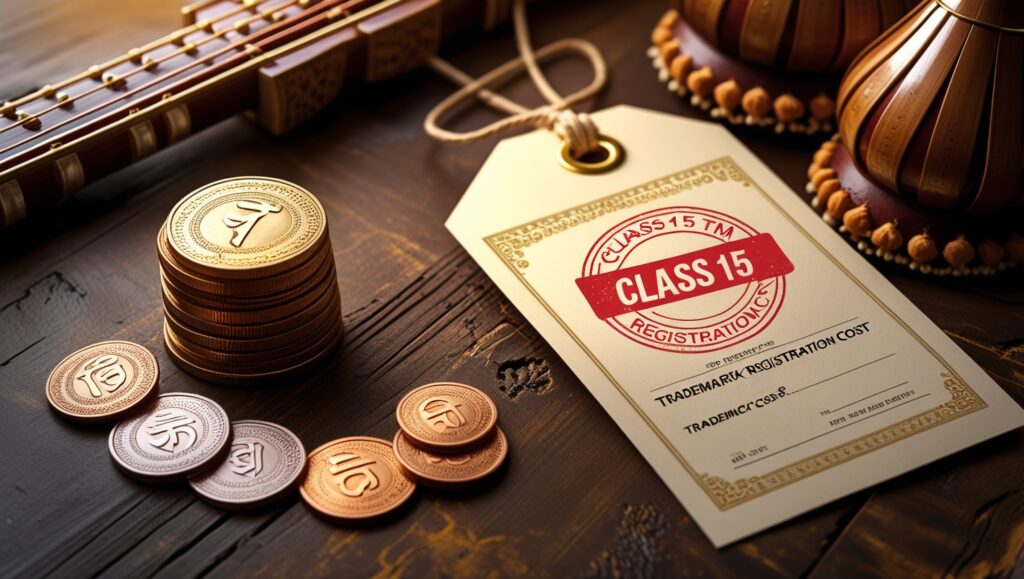
What Is Trademark Class 15?
Trademark Class 15 is part of the international classification system used to categorize goods and services for trademark registration. Class 15 specifically includes:
- Musical instruments
- Stands and holders for musical instruments
- Musical boxes
- Electronic musical instruments
- Accessories like strings, reeds, and mouthpieces
If your business is involved in manufacturing, selling, or distributing musical instruments or related products, Class 15 is the appropriate category for trademark registration.
Why Trademark Registration Is Essential for Class 15 Products
Musical instruments often carry a high brand value. Consumers associate quality and performance with specific brands. By registering your brand under Class 15:
- You protect your brand from misuse.
- You gain exclusive rights to use the trademark for your products.
- You can take legal action against counterfeiters and imitators.
- It adds value to your brand, especially when seeking investment or expansion.
Trademark Registration Cost Structure in India
The total cost of trademark registration in India can vary depending on the applicant type and the method you choose (self-filing vs. professional assistance). Here’s a detailed breakdown:
1. Government Filing Fees
| Applicant Type | Fee (Per Class) |
| Individual / Startup / Small Enterprise | INR 4,500 |
| Company / Partnership / LLP / Other Entities | INR 9,000 |
Note: The fees are applicable per trademark per class. So if you apply for multiple classes, the fee will multiply accordingly.
2. Professional Fees (If Using a Trademark Agent)
Most businesses prefer hiring a trademark attorney or agent to avoid errors and ensure smooth filing. Professional charges generally range from:
- INR 2,500 to INR 7,000 per application
Factors that affect the charges:
- Experience of the agent
- Complexity of the trademark
- Response to examination reports
3. Trademark Search Fee (Optional but Recommended)
Before you file, it’s wise to conduct a thorough trademark search to ensure your brand name/logo is unique under Class 15. This avoids rejection due to similarity.
- DIY on IP India website: Free
- Professional search fee: INR 500 to INR 2,000
4. Other Incidental Costs
- Reply to Examination Report (if objections are raised): INR 1,500 to INR 5,000 (professional charges)
- Hearing Representation (if hearing is scheduled): INR 3,000 to INR 10,000
- Rectification Fees (if someone challenges your trademark): Varies based on case complexity
Sample Cost Calculation for a Startup Filing with Agent Assistance
Let’s say a musical instrument startup wants to register a trademark under Class 15 using a trademark attorney:
| Component | Cost (INR) |
| Government Fee (Startup) | 4,500 |
| Agent Fee | 5,000 |
| Trademark Search | 1,000 |
| Total Estimated Cost | 10,500 |
If there are objections or hearings, this cost may increase by INR 3,000 to INR 10,000 depending on the legal assistance needed.
Additional Factors That Can Affect Trademark Registration Costs
1. Multiple Classes
If you wish to register your trademark under Class 15 and another class (e.g., Class 35 for online retail of instruments), the government and agent fees will double.
2. Logo + Wordmark Registration
Registering both the brand name (wordmark) and logo (device mark) separately involves additional charges. Each application is treated separately.
3. International Protection (Madrid Protocol)
If you plan to export or expand internationally, you may apply for registration in other countries under the Madrid Protocol. This involves:
- Basic fee (approx. INR 60,000+ depending on country)
- Additional fees for each designated country
Timeline for Trademark Registration and Related Costs
Here’s a breakdown of the typical timeline and any related costs:
- Trademark Search – 1 day (Optional fee)
- Filing the Application – 1-2 days (Government + Agent fee)
- Examination Report – Within 1-3 months (Possible objection response fee)
- Publication in Journal – 3-6 months (No additional cost)
- Registration Certificate – After 6-12 months (No additional cost if no objections)
If there are no objections or oppositions, the registration process can be completed in 6 to 12 months.
Can You Register a Trademark Yourself to Save Cost?
Yes, you can file a trademark application yourself using the IP India online portal. However, while it may save on professional fees, it increases the risk of:
- Incorrect classification
- Rejections due to existing similar marks
- Inability to respond to legal objections
For businesses serious about brand protection, hiring a professional is highly recommended.
Cost vs. Value: Why It’s Worth It
Trademark registration under Class 15 might seem costly at first glance, but the value it provides in long-term brand protection and growth is significant:
- Legal ownership and exclusivity in the marketplace
- Enhanced brand credibility in the eyes of consumers
- Better position in disputes and enforcement
- Supports franchising, licensing, and valuation
In the musical instrument industry, where reputation and uniqueness are essential, securing your identity early through proper trademark registration is a smart investment.
Final Thoughts
Registering a trademark under Class 15 in India involves both government and optional professional costs. The total expense may vary from INR 4,500 to INR 20,000+ depending on your business type, filing method, and the complexity of the case.
If you’re a musical instrument manufacturer, seller, or brand owner looking to secure your place in the Indian market, don’t delay trademark registration. It’s the foundation of a strong brand identity and offers legal protection in a competitive space.
Need Help with Class 15 Trademark Registration?
VMK Professionals is here to simplify the trademark registration process for musical instrument brands. Whether you’re a startup or an established manufacturer, our expert team can assist you with:
- Trademark search and classification
- Filing and documentation
- Responding to objections
- Trademark monitoring and renewals
Contact us today to protect your brand under Trademark Class 15.
Top Errors to Watch Out for When Filing a Class 15 Trademark in India
Protecting your brand in the music world—whether you’re crafting tabla, electric guitars, or digital keyboards—means filing your trademark under Class 15. Get it wrong, though, and you’ll face delays, objections, or even rejections. This guide highlights the top mistakes applicants make in Class 15 filings and shows you exactly how to dodge them for a smooth, successful process.
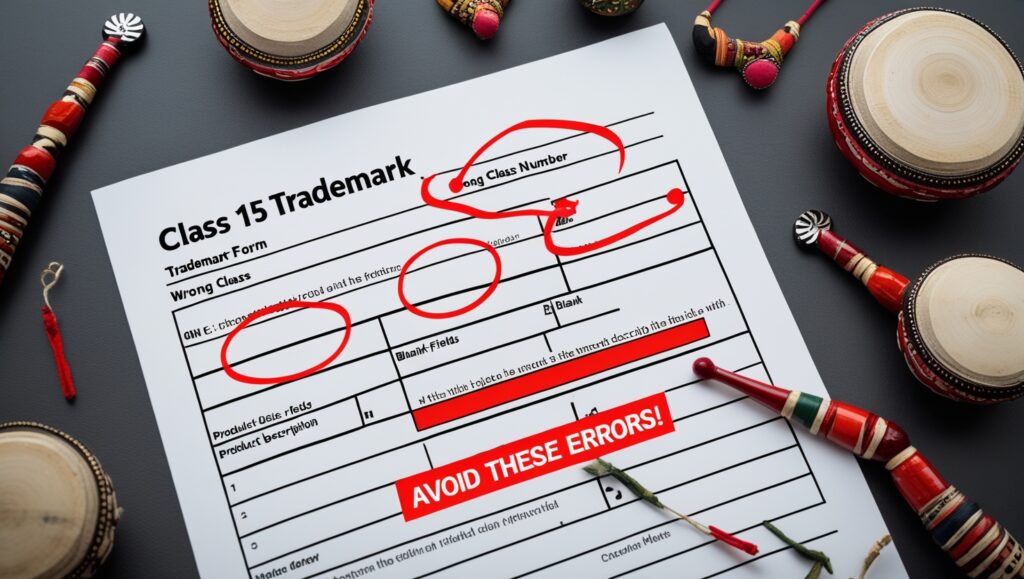
1. 🚫 Filing Under the Wrong Class
Mistake: Using Class 15 for unrelated goods (like merchandise, software, or sound systems).
Why It Matters: Your application may be rejected or result in weak protection.
Solution:
- Class 15 covers: musical instruments, accessories (tuners, drumsticks), cases, stands, tuning forks, electronic instruments (synthesizers, MIDI controllers).
- For software: use Class 9. For educational services: Class 41. For clothing: Class 25.
2. 🔍 Skipping a Thorough Search
Mistake: Conducting only a quick search or none at all before filing.
Why It Matters: You risk infringement complaints or having your application opposed.
Solution:
- Search using wordmarks, phonetics, and Vienna Codes on the IP India portal.
- Look beyond exact matches—check possible transliterations, misspellings, or abbreviations.
- Keep records of search results to back your filing.
3. ❌ Choosing a Generic or Descriptive Mark
Mistake: Names like “TablaPro” or “GuitarGenius”—too obvious or descriptive to register.
Why It Matters: Such marks are considered weak and often face rejection.
Solution:
- Opt for coined or suggestive names: TablaCraft, RagaWave, or StratoTune.
- Ensure your name isn’t overly descriptive of the product’s feature or function.
4. 📦 Vague Product Descriptions
Mistake: Application describes goods simply as “musical instruments.”
Why It Matters: Vague listings leave gaps in protection and trigger examiner queries.
Solution:
- Be specific: “Electric guitars; acoustic guitars; guitar amplifiers; guitar strings.”
- Detailed listings are less likely to be objected to and offer clearer coverage.
5. 🔄 Mixing Diverse Goods in One Class
Mistake: Combining instruments with clothing, software, or electronics in a single Class 15 application.
Why It Matters: It confuses categorization and is often rejected.
Solution:
- File multi-class applications properly: e.g., Class 15 for instruments, Class 9 for equipment and software, Class 25 for apparel.
- Keep each product in its correct class for clarity and compliance.
6. 🖼️ Uploading Low-Quality Logos
Mistake: Submitting pixelated or distorted logo images.
Why It Matters: Poor quality can lead to rejection or misinterpretation of the mark.
Solution:
- Upload high-resolution images (300+ DPI, clear edges, accurate colors).
- Use vector formats if possible for clarity and consistency.
7. 🎵 Ignoring Phonetic Similarities
Mistake: Overlooking names that sound alike (e.g., “RagaWave” vs. “RagaWayv”).
Why It Matters: Phonetic similarity can still cause legal issues and confusion.
Solution:
- Always run phonetic searches for your proposed trademark.
- Choose names that sound distinct and don’t mimic existing brands.
8. ⚠️ Overlooking Abandoned or Dormant Marks
Mistake: Believing a mark is available if it’s listed as “Abandoned” or “Expired.”
Why It Matters: Some abandoned marks still cause confusion and objections.
Solution:
- Investigate the status and usage history of dormant marks.
- Consider modifying your name further to avoid edge-case conflicts.
9. 🕓 Filing Too Late
Mistake: Waiting until your business is well established before applying.
Why It Matters: Risk of brand squatting, confusion, or infringement claims.
Solution:
- File in the prototype or planning phase, before heavy investment.
- Early registration protects your brand identity and helps securing domain names and social handles.
10. 🌀 Ignoring Expansion Plans
Mistake: Registering only instruments but later selling merchandise or software under the same brand.
Why It Matters: New goods aren’t protected, opening you to infringement risks.
Solution:
- Anticipate future aspirations and file in all relevant classes now.
- You can also file additional filings later, but early multi-class registration is more efficient.
11. 📝 DIY Filing Without Expert Review
Mistake: Filing without professional input on wording, classification, or filings.
Why It Matters: Increases risk of errors, delays, or rejection.
Solution:
- Consult a trademark expert or agency to draft and review your application.
- Experts help handle objections, oppositions, and ensure strong filing language.
12. 🕒 Missing Objection Deadlines
Mistake: Failing to respond to examination reports promptly.
Why It Matters: Applications get rejected automatically if no response within 30 days.
Solution:
- Monitor your application status regularly via IP India portal.
- Be ready to respond within the timeline; get legal support if needed.
13. 🔔 Neglecting the Opposition Phase
Mistake: Assuming publication in the journal guarantees registration.
Why It Matters: Anyone can oppose during the 4-month opposition window.
Solution:
- Have evidence ready (use, first sale) to counter opposition.
- Actively monitor the journal for any oppositions filed against you.
14. 📅 Forgetting Trademark Renewals
Mistake: Ignoring the need to renew every 10 years.
Why It Matters: Expired trademarks lose protection and can be claimed by others.
Solution:
- Renew in year 9 before expiry.
- Keep usage records to demonstrate continued usage if challenged.
15. 🗃️ No Proof of Use
Mistake: Failing to collect and store evidence of trademark usage.
Why It Matters: You might lose protection due to non-use in court or opposition.
Solution:
- Document each sale, packaging, website page, and marketing collateral.
- Keep screenshots and invoices to validate your active use.
16. 🚨 Skipping Ongoing Monitoring
Mistake: Assuming once registered, your brand is safe forever.
Why It Matters: Copycat brands, improper usage, and similar applications can still slip through.
Solution:
- Use IP watch tools to track new applications in Class 15.
- Remove counterfeit listings on e-commerce channels immediately.
17. 🛒 Neglecting E-commerce Protections
Mistake: Selling on Flipkart or Amazon without a registered trademark.
Why It Matters: You can’t claim brand registry status, making you vulnerable to hijackers.
Solution:
- Apply for trademark protection early to access Brand Registry features.
- It helps remove infringing listings and secure exclusive control of your listings.
18. 🔄 Misunderstanding TM Types (Word vs. Device)
Mistake: Confusing wordmarks and logos.
Why It Matters: You may lack proper protection depending on your application type.
Solution:
- File separate applications if you want both word and logo protection.
- Clearly declare whether it’s a Wordmark (text) or Device Mark (logo).
19. 🛠️ Inconsistent Brand Usage
Mistake: Using variations of your trademark (like capitalization or spelling) inconsistently.
Why It Matters: Legal rights are weakened by inconsistent branding.
Solution:
- Use the same trademark across all platforms—capitalization, font, color, spacing.
- Issue brand guidelines to everyone who represents your business.
20. ⛔ Ignoring Country-Specific Protocols
Mistake: Treating Class 15 guidelines as globally identical.
Why It Matters: Indian regulations may differ from global norms.
Solution:
- Follow the Indian TM-A filing rules—file online, sign correctly, pay fees properly.
- Use the Madrid Protocol for international filings only after securing your Indian mark.
📑 Quick Checklist
Use this before filing:
- Is your product truly in Class 15?
- Conducted checks for word, phonetic, and logo similarity?
- Avoided generic or descriptive names?
- Specified goods clearly and completely?
- Filed in necessary additional classes?
- Uploaded clear, high-resolution logos?
- Handled objections and oppositions on time?
- Paid renewal fees before expiration?
- Collected proof of use regularly?
- Monitored new applications for infringements?
- Applied for Brand Registry in e-commerce platforms?
✅ Final Thoughts
Filing a trademark in Class 15 might seem simple, but it requires focused strategy—especially in India’s growing music market. Avoiding these 20 common mistakes boosts your chances of a smooth approval journey and long-term brand protection. A little planning goes a long way toward securing your brand’s musical legacy.
🎵 Need Expert Class 15 Support?
VMK Professionals specialize in guiding musical brands through every stage of trademark protection—from naming, searching, filing, and monitoring to renewal and defense. Let us handle the legalities so you can stay focused on creating great music.
👉 Contact us today and hit the right note with your trademark!
Step-by-Step: Searching for Class 15 Trademarks in India the Right Way
Introduction
Trademark protection is an essential step for anyone launching a business, especially in niche industries like musical instrument manufacturing. If your brand falls under this category, it likely belongs to Trademark Class 15, which includes musical instruments and related accessories. Conducting a trademark search in Class 15 before filing an application helps avoid legal disputes, saves money, and ensures brand uniqueness. This step-by-step guide will walk you through everything you need to know about conducting a trademark search in India for Class 15.

What is Trademark Class 15?
Trademark Class 15 under the NICE Classification system is reserved for:
- Musical instruments (e.g., guitars, pianos, drums)
- Electronic musical instruments
- Tuning forks, pitch pipes
- Instrument cases
- Parts and fittings of musical instruments
If your product or business is connected to the manufacture, sale, or service of musical instruments, your trademark application must fall under Class 15.
Why Conduct a Trademark Search Before Filing?
A pre-filing trademark search helps:
- Avoid Legal Conflicts: Identifies existing trademarks similar to yours.
- Save Time & Money: Prevents wasted effort in branding and marketing.
- Improve Approval Chances: Ensures your application isn’t rejected for similarity.
- Strategic Branding: Lets you pick a name/logo that stands out.
Step-by-Step Guide to Conducting a Trademark Search for Class 15 in India
Step 1: Visit the Indian Trademark Search Portal
- Go to the official IP India website: https://ipindiaonline.gov.in/tmrpublicsearch/
- Select the “Public Search” tool.
Step 2: Choose the Right Search Type
You will find three options:
- Wordmark: For brand names or words
- Vienna Code: For logos or symbols
- Phonetic: For similar sounding marks
Start with “Wordmark” to search for names and brand words.
Step 3: Enter Your Search Query
- Input your proposed brand name
- Choose “Starts With,” “Contains,” or “Match With” depending on how closely you want to match
- Select Class 15 from the dropdown menu
Example: If your brand is “RhythmWaves,” input this into the Wordmark field and select Class 15.
Step 4: Analyze the Results
Look through the list of trademarks to find:
- Identical names
- Similar sounding names
- Similar logo design or stylization
- Same class of goods
Note the Application Number, Status, Proprietor Name, and Goods Description.
Step 5: Perform a Phonetic Search
Go back and select the “Phonetic” option. Enter the name again to find similar-sounding trademarks. This helps uncover potential conflicts not visible in the Wordmark search.
Step 6: Search Using Vienna Code (If Logo Is Involved)
If your brand includes a visual logo, use the Vienna Code Search:
- Click on “Vienna Code” search
- Use the Vienna Classification Manual to find the appropriate code for your logo design
- Enter the code and select Class 15
Step 7: Cross-Verify in Other Classes (Optional But Recommended)
If your musical brand also offers merchandise like T-shirts (Class 25) or streaming services (Class 41), check those classes too.
Step 8: Document Your Findings
Create a simple table or spreadsheet noting:
- Conflicting trademarks
- Similar sounding names
- Live vs Abandoned marks
- Application status
This helps decide whether you should proceed with your brand name or modify it.
Step 9: Consult a Trademark Expert
Even if your search shows no major conflicts, having a legal expert validate your findings can avoid future problems. They can also help file the trademark properly and respond to objections.
Tips for an Effective Class 15 Trademark Search
- Always check for phonetic and visual similarities
- Avoid generic names like “MusicShop” or “GuitarWorld”
- Check status updates regularly if a similar mark exists
- Be creative with your name while maintaining relevance
Common Reasons for Trademark Rejection in Class 15
- Similarity to Existing Trademarks
- Descriptive or Generic Terms
- Lack of Distinctiveness
- Use of Prohibited Words or Symbols
- Incorrect Class Mentioned
Real-Life Example
A startup called “TuneNest” wanted to launch custom-made ukuleles in India. They performed a Class 15 trademark search and found a similar-sounding name “TuneNext” registered under the same class. Rather than risking rejection, they renamed their brand to “UkeNest” and successfully registered the trademark.
What to Do If a Similar Trademark Exists?
- Rebrand Slightly: Modify the name, spelling, or styling
- Choose a Different Name: Opt for a more unique identity
- Wait and Monitor: If the conflicting mark is abandoned or nearing expiry
- File an Objection: In certain cases, you can file opposition if you have prior use
After the Search: Next Steps
- Prepare the Trademark Application: Include brand name, logo, class, and description
- Submit on IP India Website: Along with necessary fees
- Track Status and Respond to Examination Reports
- Publication and Opposition Period: Wait 4 months after journal publication
- Receive Certificate: Once approved, you get a trademark valid for 10 years
Conclusion
Trademark Class 15 is vital for anyone involved in the musical instrument industry in India. A thorough and well-executed trademark search can save you from legal trouble, wasted resources, and brand confusion. Whether you’re launching a new guitar brand or selling electronic keyboards, following this guide will help you ensure your brand is safe, unique, and future-ready.
Need Help with Trademark Search or Registration in India?
At VMK Professionals, we specialize in helping entrepreneurs, startups, and established businesses secure their intellectual property. From Class 15 trademark searches to full-service application handling, we ensure your brand remains protected.
Contact us today to get started with your Class 15 trademark strategy.
Famous Indian Companies Using Class 15 Trademarks & What You Can Learn
Introduction
In India’s evolving business ecosystem, protecting brand identity is critical for long-term growth and competitive edge. One lesser-discussed but equally important trademark classification is Trademark Class 15, which applies to musical instruments and related goods. While it may seem niche, this class plays a crucial role in safeguarding creative assets and ensuring exclusivity in a vibrant and growing music industry. In this blog, we explore top Indian brands using Trademark Class 15, why they have chosen to register under it, and why it matters for brand protection and market success.
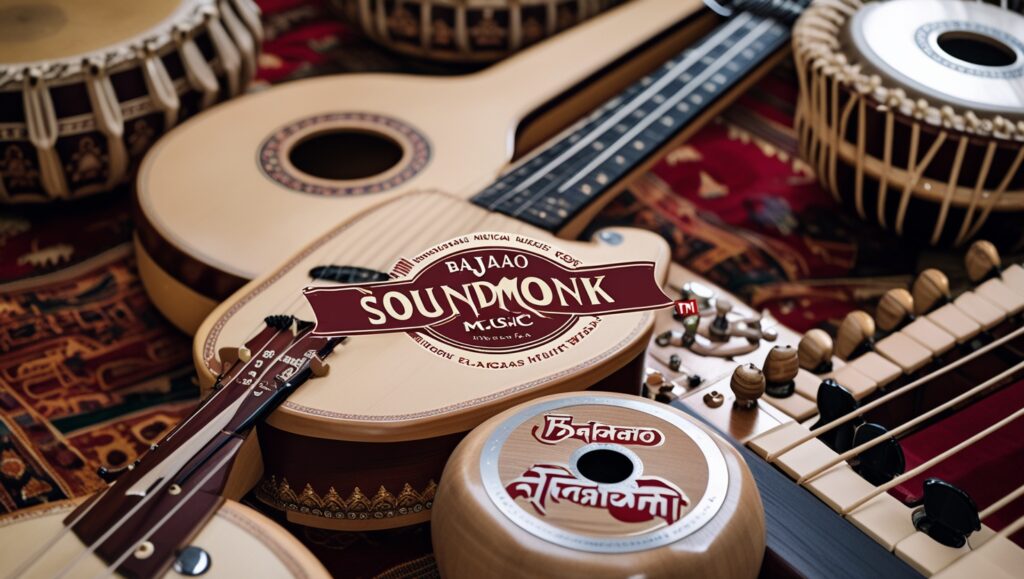
What Is Trademark Class 15?
Trademark Class 15 is part of the NICE Classification system used globally to categorize goods and services. Specifically, Class 15 covers:
- Musical instruments
- Music stands
- Conductors’ batons
- Accessories for musical instruments (excluding those in other classes)
This classification is essential for businesses manufacturing, selling, or marketing musical instruments in India or exporting them globally.
Why Register in Trademark Class 15?
Registering your brand under the right trademark class ensures legal protection against misuse or infringement. Here’s why it matters:
- Exclusive Rights: Only the trademark owner can legally use the name/logo in connection with musical instruments.
- Legal Protection: You can take legal action against counterfeiting or unauthorized use.
- Consumer Trust: A registered brand assures customers of authenticity.
- Global Expansion: Trademark registration supports international growth, especially through the Madrid Protocol.
Top Indian Brands Registered Under Trademark Class 15
India has a rich tradition of music, and several brands have capitalized on this by offering quality instruments. Here are some leading names registered under Class 15:
1. Hohner Musicals India
Although originally a German brand, Hohner’s Indian distribution and retail network have trademarked the name locally. They offer:
- Harmonicas
- Accordions
- Recorders
Trademark Class 15 ensures that their instruments are not confused with local imitators.
2. Bina Harmonium
An iconic name in Indian classical music, Bina Harmonium is a legacy brand.
- Established in the early 20th century
- Known for premium harmoniums
- Trademark Class 15 registration prevents knockoffs
3. Soundkraft
Catering to modern music needs, Soundkraft offers:
- Electronic drum kits
- Amplifiers
- Digital keyboards
Their registration under Class 15 ensures a strong foothold in both offline and e-commerce markets.
4. Kadence
A fast-growing Indian brand offering:
- Guitars
- Ukuleles
- Cajons
Trademark Class 15 protection helps Kadence maintain brand integrity across international markets.
5. Radel Electronics
A pioneer in electronic instruments for classical Indian music:
- Electronic tanpuras
- Shruti boxes
- Tabla machines
Being in Class 15 gives them legal control over their innovative product line.
6. Tansen Musicals
Focused on classical and folk instruments:
- Sitar
- Sarangi
- Dholak
Trademark Class 15 helps preserve cultural legacy and authenticity.
How Trademark Class 15 Helps These Brands
These brands benefit in the following ways:
- Market Exclusivity: No one can copy their product names or branding.
- E-commerce Advantage: Easier to remove counterfeit listings from platforms like Amazon, Flipkart.
- Investor Confidence: Protected IP boosts brand valuation and attracts investment.
- Customer Loyalty: Trust is built through consistent brand identity.
The Growing Musical Instrument Market in India
According to a report by IMI (Indian Music Industry):
- India’s musical instrument industry is growing at over 5% annually.
- E-commerce is fueling increased sales.
- Rising demand for affordable and premium-quality instruments across age groups.
With this boom, protecting your music brand under Class 15 becomes a strategic necessity.
Who Should Register Under Class 15?
If your business deals with:
- Classical or western musical instruments
- Electronic music devices
- Music accessories (e.g., picks, stands, tuners)
- Music equipment manufacturing
Then Class 15 is the right choice.
Checklist Before Filing for Trademark Class 15 in India
- Conduct a Trademark Search: Ensure your name/logo isn’t already registered in Class 15.
- Clarify Product Scope: Define exactly what you’re registering (e.g., guitars, sitars, or harmoniums).
- File the Application: Submit Form TM-A via the Trademark Registry or through an agent.
- Choose the Right Owner Category: Startup/Individual (INR 4,500) or Company (INR 9,000).
- Monitor Application Progress: Respond to any Examination Reports or opposition.
- Publication and Registration: Once passed, your mark is published and registered if uncontested.
Case Study: How Class 15 Helped Kadence Expand Globally
Kadence, an Indian startup, began by selling guitars and ukuleles online. After registering under Class 15:
- They removed fake listings on Amazon.
- Expanded into South Asian and UAE markets.
- Signed distribution deals with major retailers.
Their trademark helped secure their position as a trusted name in the instrument business.
Mistakes to Avoid While Filing for Class 15
- Using generic names like “GuitarZone” or “SitarMart” (easily rejected).
- Failing to search for similar existing trademarks.
- Incorrect product listing can result in rejection or weak protection.
- Not renewing your trademark every 10 years.
Future Trends in Trademark Class 15 in India
- Digital Music Boom: Rise in electronic instruments and online music learning.
- Indie Brand Growth: Smaller brands entering the market need protection.
- International Recognition: More Indian brands are exporting—making IP protection vital.
Conclusion
Trademark Class 15 may serve a niche, but it plays a powerful role in building, protecting, and growing musical instrument brands in India. From legacy harmonium makers to modern guitar startups, Indian businesses have leveraged this classification to secure their creative identity and market presence. If your product fits Class 15, now is the time to file and protect it.
Whether you’re an established brand or a passionate startup, trademark registration under Class 15 ensures your music plays on—undistorted, unchallenged, and unmistakably yours.
Need Help With Class 15 Trademark Registration?
At VMK Professionals, we specialize in trademark registration for musical instrument brands in India. From Class 15 consultation to end-to-end filing, we ensure your brand is protected from copycats and confusion.
Get in touch today to begin your journey towards secure and professional branding.
What Can You Trademark Under Class 15 in India? Full Product List Inside
Introduction
Trademark classification is essential for protecting your brand under the right product or service category. In India, the NICE Classification system is used, which divides trademarks into 45 classes. Trademark Class 15 specifically deals with musical instruments and related items. If your business involves manufacturing, selling, or distributing musical instruments, understanding what falls under Class 15 is crucial. In this detailed guide, we will explore the complete product list under Class 15 and what can be registered in India.

Understanding Trademark Class 15
Class 15 of the NICE Classification encompasses all kinds of musical instruments. It includes traditional, classical, electronic, and modern musical tools and devices. This class helps brands in the music instrument industry protect their brand identity and prevent unauthorized use of their marks.
Key Features of Class 15:
- Covers a wide range of musical instruments
- Includes accessories and parts of instruments
- Does not cover software or recorded music
Who Should Register Under Class 15?
- Musical instrument manufacturers
- Retailers and wholesalers of musical instruments
- Exporters and importers of instruments
- Online sellers of instruments (including e-commerce platforms)
- Custom builders and artisans who create specialized or handmade instruments
Trademark Class 15 Product List
Here’s a comprehensive list of what can be registered under Class 15 in India:
- Pianos
- Upright pianos
- Grand pianos
- Digital pianos
- Guitars
- Acoustic guitars
- Electric guitars
- Bass guitars
- Guitar amplifiers (if sold integrated with the guitar)
- String Instruments
- Violins
- Cellos
- Harps
- Double basses
- Wind Instruments
- Flutes
- Clarinets
- Saxophones
- Oboes
- Bassoons
- Harmonicas
- Brass Instruments
- Trumpets
- Trombones
- Tubas
- French horns
- Percussion Instruments
- Drums
- Tambourines
- Xylophones
- Congas
- Maracas
- Cymbals
- Tabla
- Dhol
- Electronic Instruments
- Synthesizers
- Electric drum kits
- MIDI controllers
- Samplers
- Traditional Indian Instruments
- Sitar
- Veena
- Sarod
- Santoor
- Shehnai
- Mridangam
- Keyboard Instruments
- Organs
- Accordions
- Harmoniums
- Instrument Accessories
- Instrument cases
- Instrument stands
- Strings for instruments
- Tuning forks
- Mouthpieces
- Reeds
- Drumsticks
- Educational Musical Instruments
- Toy musical instruments (educational only)
- Practice pads
- Beginner-friendly keyboards and flutes
- Tuning and Maintenance Tools
- Instrument tuners
- Cleaning kits for musical instruments
Note: Items like software used for music composition or apps are covered under different classes (typically Class 9).
What Cannot Be Registered Under Class 15?
While Class 15 is broad, it does not include:
- Music recordings (Class 9)
- Music streaming or publishing services (Class 41)
- Software for music creation (Class 9)
- Stage lighting and sound systems (Class 11 or Class 9)
It’s important to file under the right class to avoid legal disputes or application rejections.
Importance of Choosing the Right Class
- Proper Legal Protection: Filing under the correct class ensures your brand is protected in its specific business domain.
- Avoids Future Disputes: Prevents other businesses from registering a similar mark for the same product category.
- Ease in Legal Enforcement: Makes it easier to take legal action against counterfeiters or infringers.
- Eases Expansion: Proper registration helps when you want to extend your brand into new product lines or international markets.
Steps to Register a Trademark in Class 15 in India
- Trademark Search
- Use the Indian Trademark Registry’s search tool to check if your name/logo is already registered in Class 15.
- Drafting the Application
- Define the goods accurately (e.g., “acoustic guitars, electric guitars”)
- Choose logo, name, and tagline carefully
- Filing the Application
- Online via the IP India portal
- Government fee: INR 4,500 for individuals/startups; INR 9,000 for companies
- Examination & Objection (If Any)
- An examiner reviews your application
- You may need to respond to objections with legal justifications
- Publication in Journal
- Your application is published for 4 months
- If no opposition is filed, it proceeds to registration
- Trademark Certificate
- Receive your certificate
- Valid for 10 years and can be renewed
Tips for Musical Instrument Makers and Sellers
- Include All Variants
- List all relevant instruments your business deals in to ensure complete protection.
- Monitor for Infringements
- Regularly search for similar trademarks that might conflict with yours.
- Use the Mark Publicly
- Put your TM or ® symbol on your instruments, website, and packaging.
- International Protection
- Use the Madrid Protocol for overseas markets.
- Hire a Trademark Expert
- Professional support helps avoid mistakes and improves approval chances.
Conclusion
Trademark Class 15 is vital for anyone involved in musical instruments in India. Whether you’re a startup creating handmade sitars or a large manufacturer exporting electronic keyboards, ensuring your brand is registered under the right class is essential for business growth and legal safety. With a wide range of musical products included, Class 15 offers ample protection and brand security in the competitive music industry. Always conduct a proper trademark search and describe your products clearly in the application to enjoy smooth registration and long-term benefits.
Need Help With Trademark Registration in Class 15?
At VMK Professionals, we provide end-to-end trademark services for musical instrument makers and businesses across India. From trademark search to final registration, our experts ensure your brand is protected under the correct class.
Get in touch with us today and secure your place in the music industry with confidence.
Class 15 Trademark in India: Everything Music Brands Need to Know
Introduction
If you’re a musical instrument maker or business in India, protecting your brand is as vital as tuning your instruments. A trademark not only helps distinguish your products in a competitive market but also legally safeguards your brand identity. Specifically, for musical instruments, Trademark Class 15 is the category you must know. In this detailed guide, we break down what Class 15 covers, why it matters to instrument makers, and how to secure your rights under Indian trademark law.

1. Understanding Trademark Classification in India
India follows the NICE Classification system, an international standard used to categorize goods and services for trademark purposes. There are 45 classes: 1-34 for goods and 35-45 for services.
Each trademark application must be filed under one or more of these classes, depending on the nature of the business. If you’re in the musical instrument industry, Class 15 is likely the primary class that applies to you.
2. What Is Trademark Class 15?
Trademark Class 15 specifically covers:
- Musical instruments
- Stands and cases for musical instruments
- Parts and fittings for musical instruments
Examples include:
- Guitars
- Violins
- Flutes
- Drum kits
- Pianos
- Synthesizers
- DJ controllers
- Guitar picks and strings
- Instrument cases
Class 15 covers both acoustic and electronic instruments, as well as their accessories. Whether you manufacture, sell, or distribute these products, you need to file under this class.
3. Who Needs to Register Under Class 15?
Any business or individual involved in the production or sale of musical instruments and their accessories should register under Class 15. This includes:
- Instrument manufacturers
- Custom instrument makers
- Retailers and e-commerce sellers
- Importers and exporters
- Music schools producing branded merchandise
Registering your brand ensures no one else can legally use a similar mark for similar products.
4. Why Is Trademark Registration in Class 15 Important?
a. Legal Protection: Registering gives you exclusive rights to use your brand name and logo for musical instruments.
b. Market Differentiation: In a competitive industry, a trademark distinguishes your products from competitors.
c. E-commerce Advantage: Online platforms like Amazon or Flipkart often require trademark proof for branded listings.
d. Preventing Infringement: Your trademark enables you to take legal action against counterfeiters and brand abusers.
e. Asset Creation: A registered trademark becomes a valuable intangible asset for your business, useful for licensing or resale.
5. How to Conduct a Trademark Search for Class 15
Before filing your application, it’s essential to ensure your desired name/logo isn’t already in use:
Step 1: Visit the IP India Portal
Website: https://ipindia.gov.in
Step 2: Choose ‘Public Search’
Step 3: Select Class 15
Step 4: Search by Wordmark, Phonetic, or Vienna Code
Step 5: Review Similar Trademarks
Avoid names that are already registered or closely resemble existing trademarks in Class 15.
6. Filing a Trademark Application for Class 15
Step 1: Prepare Details
- Applicant Name & Address
- Brand Name/Logo/Tagline
- Nature of Business
- List of Products (e.g., acoustic guitars, piano stands, guitar strings)
Step 2: Submit TM-A Form
You can file online via the IP India website.
Fees:
- Individuals/Startups: ₹4,500 per class
- Companies: ₹9,000 per class
Step 3: Examination & Objection
Your application will be examined. If there are objections, a response must be filed.
Step 4: Journal Publication
If accepted, your trademark is published for 4 months to allow third-party opposition.
Step 5: Registration Certificate
If unopposed, your trademark is registered and valid for 10 years (renewable).
7. Real-World Example: Protecting a Musical Brand
Let’s say you manufacture a line of handcrafted ukuleles called “StrumJoy.”
If someone else starts selling cheap plastic ukuleles online with the same or similar name, your Class 15 trademark allows you to:
- Send a cease-and-desist letter
- Report to e-commerce platforms to delist the infringing product
- Take legal action under the Trademarks Act, 1999
Without registration, your legal options are limited and costlier.
8. Common Mistakes to Avoid in Class 15 Trademark Filing
- Choosing Generic Names: Names like “GuitarStore” are hard to register.
- Wrong Class Selection: Don’t register under Class 25 (clothing) for instruments.
- Poor Trademark Search: Always verify that the name is unique in Class 15.
- Not Including Accessories: Ensure cases, stands, and other gear are listed.
9. Trademark Class Overlaps and Multi-Class Filing
If your business also makes:
- T-shirts or merch → Add Class 25
- Music education services → Add Class 41
- Software for sound editing → Add Class 9
You can file a multi-class application if your brand spans across product categories.
10. Renewal and Post-Registration Duties
- Trademarks are valid for 10 years, with an option to renew indefinitely.
- Use the ® symbol only after registration.
- Monitor and oppose similar marks filed later.
- Maintain active usage—non-use for 5 years can lead to cancellation.
Conclusion
Trademark Class 15 is crucial for any musical instrument maker or seller in India. It legally protects your brand, builds customer trust, supports your e-commerce journey, and enhances your business value. From handcrafted violins to digital audio gear, if it’s musical, Class 15 is your legal home.
Don’t wait until someone copies your brand. Register your trademark today and let your business make noise for the right reasons.
About VMK Professionals
At VMK Professionals, we help musical instrument makers, startups, and established brands secure their trademarks with ease. From search to filing, objection handling, and renewal, we handle it all.
Get expert help today — and ensure your music brand stays uniquely yours!
Class 14 Eligibility Guide: What Jewelry Entrepreneurs Must Know Before Applying
Introduction 🌟
For jewelry entrepreneurs, picking the right trademark class is crucial—and no one wants to file mistakes that delay registration or leave your brand unprotected. Trademark Class 14 under the Nice Classification covers jewelry, precious metals, gemstones, timepieces, and related accessories.
But not every accessory belongs in Class 14. This guide provides a clear, actionable checklist to help you decide whether your product fits Class 14, so you’re filing correctly from day one, saving time, money, and legal headaches.
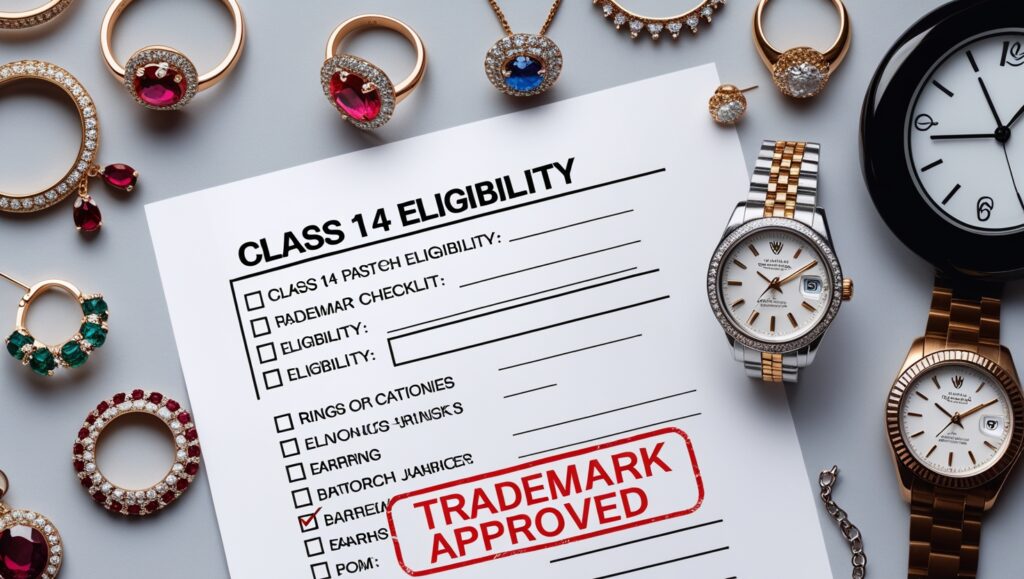
1. What Exactly Is Class 14?
Class 14 includes:
- Precious metals and their alloys (gold, silver, platinum)
- Jewelry (fine, costume, imitation)
- Precious and semi-precious stones
- Watches, clocks, and timing instruments
- Jewelry boxes (especially made of precious materials)
- Tie pins, cufflinks, pendants, charms
If your product fits any of these categories—especially jewelry or timepieces—it likely falls under Class 14.
2. Key Questions to Ask Yourself
A. Does It Contain Precious Metals or Stones?
- Does it include gold, silver, platinum, diamonds, emeralds, rubies?
- Even plated jewelry belongs here.
- Costume jewelry made to mimic precious materials also qualifies as “imitation jewelry.”
If yes → likely Class 14.
B. Is It Worn as Personal Adornment?
- Necklaces, rings, bracelets, brooches, earrings, anklets, or watches are all Class 14.
- Any decorative piece meant to be worn on the body usually fits.
If yes → likely Class 14.
3. Classify by Function: Decorative vs. Functional
- Decorative/personal use = Class 14 (jewelry, decorative watches).
- Purely functional items (like non-jewelry tools or plain metal hardware) do not fit here.
4. Commonly Misfiled Products
| Product | Class 14? | Notes |
| Leather watch straps | ✅ if sold with watch | May warrant Class 14 + Class 18 |
| Smart rings with health monitoring | ✅ for jewelry + Class 9 for electronics | |
| Jewelry cleaning kits | ❌ Not Class 14 | Likely Class 3 or 21 |
| Enamel fashion earrings (non-precious metal) | ❌ | Lacks precious metal content |
| Jewelry repair services | ❌ | Falls under Class 40 (services) |
5. The 8-Point Checklist
Answer yes to most to confirm Class 14 fit:
- Metal: Is precious or plated metal used?
- Stone Inclusion: Does it feature genuine or imitation gems?
- Wearable: Designed as a wearable item?
- Packaging: Is a jewelry-specific box or guaranteed required?
- Functional Design: Is it decorative, not just utilitarian?
- Tech Elements: Any electronic function requiring a second class?
- Service Offering: Are you filing a product or a service?
- Protectable Elements: Logo? Packaging design? Unique shape?
6. Why Choosing the Right Class Matters
- ✔️ Avoid Overpaying: Wrong class = redundancy & add-ons
- ✔️ Faster Registration: Correct filings reduce examiner conflict
- ✔️ Stronger Legal Defense: Class-specific rights = enforceable protection
- ✔️ Marketplace Tools: Amazon, Flipkart require Class 14 for brand registry
7. Filing Strategy for Jewelry Entrepreneurs
A. Conduct a Clearance Search
- Search Class 14 marks for same or similar names, logos
- Watch out for generic or popular terms
B. Decide on Content
- Word marks (names)
- Logos/typography (device marks)
- Taglines or packaging shapes
C. File Application
- Use Form TM-A for Class 14 in India
- Specify goods clearly: “sterling silver rings,” “gold-plated watches,” etc.
- Pay ₹4,500 (startup/individual) or ₹9,000 (company)
D. Monitor Process
- Respond to objections or journal oppositions
- File oppositions for conflicting marks if needed
E. Maintain Your Rights
- Use ® after registration
- File renewal by Year 9 for a 10-year validity
- Keep evidence of usage: packaging, tags, invoices, listings
8. Additional Tips & Common Mistakes
- Phonetic Checks Matter: Even sound-alikes can ruin applications
- Multi-Class Needs: Jewelry + electronics = dual filing in Class 9
- Use the ™ Symbol: Even before registration to signal ownership
- Monitor Marketplaces: Spot and stop counterfeit listings early
- Expert Help Pays Off: Legal partners prevent misfiling and save hassles
9. Scaling the Strategy
- Global Expansion: Use the Madrid Protocol to extend Class 14 rights internationally
- Licensing Opportunities: Trademarks turn into royalty-earning assets
- Investor Confidence: A well-fitted trademark signals business maturity
10. Final Takeaway
- Class 14 = your jewelry, whether fine or costume
- Use this checklist to ensure accurate filing
- Protecting the right product class ensures legal strength, branding clarity, and ecommerce growth
Need Help Classifying or Filing?
VMK Professionals specializes in trademark advice for jewelry entrepreneurs. From evaluation to multi-class filing and monitoring, we streamline the process so you can focus on design, not paperwork.
🔹 Contact us today for a free product-fit evaluation and secure your brand confidently!
A Beginner’s Guide to Class 14 Trademarks for New Jewelry Startups
Why Class 14 Trademarks Matter for Jewelry Startups
As a jewelry startup founder, your brand identity — name, logo, design aesthetic — is your most valuable asset. In India and globally, Trademark Class 14 covers precious metals, jewelry (real and imitation), gemstones, and timepieces. Registering your brand under this class does more than secure your name; it builds a foundation for:
- Legal ownership
- Consumer trust
- E-commerce credibility
- Fundraising potential
- Long-term brand equity
Failure to register in Class 14 leaves your brand exposed to imposters, counterfeit sellers, and costly legal disputes.
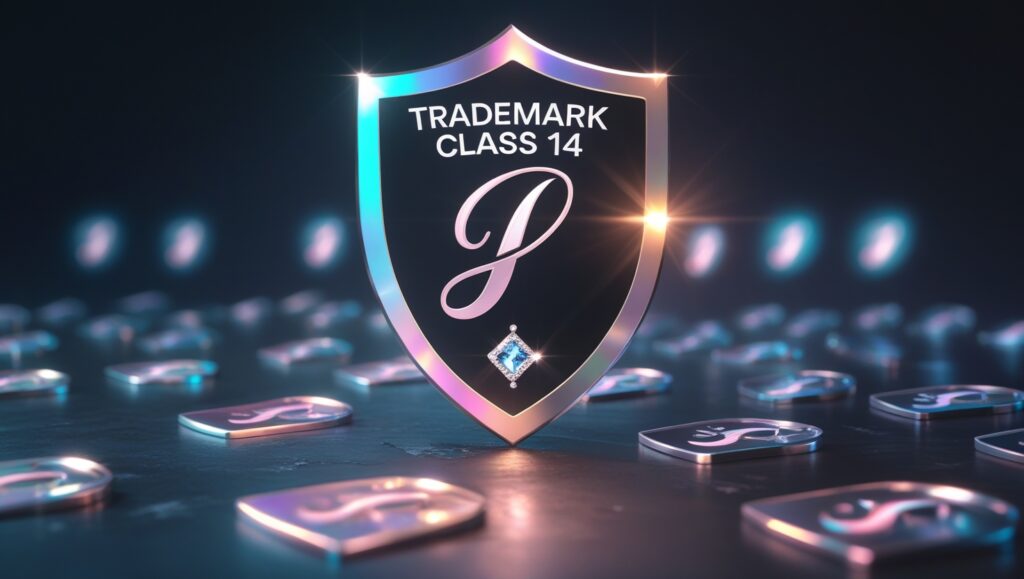
Building Your Brand Identity with a Strong Trademark
1. Choose a Distinctive Name & Logo
Generic names like “GoldCraft” or “Diamond Delights” risk rejection. Opt for invented or suggestive names—such as GeminaFusion™, Aurumique™—paired with unique logos. This boosts legal strength and memorability.
2. Include Taglines or Packaging Elements
If you use a signature tag (“Sparkle Like No Other™”) or distinctive packaging (gemstone-shaped boxes), consider registering them too. They strengthen your IP and deter copycats.
Step-by-Step: Registering a Class 14 Trademark
Step 1: Conduct a Trademark Search
Use the IP India Public Search portal. Search across:
- Exact name
- Variants and plural forms
- Phonetic equivalents
- Logo designs via Vienna codes
This helps avoid conflicts and reduces rejection risk.
Step 2: Finalize Your Trademark Elements
Decide what to protect:
- Wordmark (brand name)
- Device/logo
- Tagline or packaging shape
You can file each element in a single or combined application under Class 14.
Step 3: Draft & File TM‑A Application
Include:
- Applicant details
- Trademark images/text
- Class 14 explicit coverage (e.g., “sterling silver rings,” “gemstone pendants”)
Pay the fee (₹4,500 for individuals/startups; ₹9,000 for companies) and submit via the IP India website.
Step 4: Examination & Objection Handling
The Registrar may raise objections (name similarity, descriptiveness). Respond with legal arguments or amend the logo/name as needed.
Step 5: Publication & Opposition Period
Once accepted, your mark is published publicly. Third parties have four months to oppose. If no one does—or you win—the mark proceeds to registration.
Step 6: Certificate Issuance & Renewal
Your certified trademark lasts 10 years, renewable indefinitely. Always use ® post-registration.
Why E-commerce Success Depends on a Registered Trademark
Gain Access to Brand Registry Programs
E-commerce giants (Amazon, Flipkart, Myntra) require valid Class 14 trademarks to access brand registry—enabling:
- Counterfeit takedowns
- Enhanced storefront visibility
- Exclusive marketing tools
Strengthen Consumer Trust
Registered trademarks signal authenticity. In crowded marketplaces, shoppers filter to trusted brands—your ® reinforces confidence.
Combatting Counterfeits & Impersonators
Online marketplaces are rife with knockoffs:
- Registered trademarks let you issue cease-and-desist notices promptly
- Authorities (customs/police) act faster when you have a valid Class 14 mark
- Mental priming:Consumers see brands with ® as safer choices
Boosting Brand Value & Growth Prospects
- Investor-ready: IP-backed startups raise funds more easily
- Licensing potential: Trademark enhances franchise or licensing deals
- Mergers & Acquisitions: Brands with Class 14 registrations command higher valuations
Pro Tips for Jewelry Startups
| Tip | Why It Matters |
| Start Early | Register once you settle on a brand name to secure exclusivity. |
| Use ™ and ® Properly | Use ™ pre-registration; switch to ® after certification. |
| Keep Records | Monitor your usage, packaging, ads, invoices as proof. |
| Watch the Market | Monitor for new filings and infringing sellers using trademark watch services. |
| Renew On Time | Set reminders before the 10-year expiry to avoid lapse. |
Mistakes to Avoid
- Filing in wrong class (e.g., Class 35 for online store vs. Class 14 for products)
- Generic or descriptive names (e.g., “Luxury Bracelets”)
- Ignoring phonetic search (sound-alikes can cause rejection)
- Weak product description (be precise with “14k gold rings” vs “jewelry”)
- Failing to enforce after registration (brand value drops)
Real-World Success Stories
✨ GeminaFusion™
- Invented word trademark avoided conflicts
- Registered Class 14 before launch
- Secured Amazon Brand Store and attracted fresh investor interest
✨ Aurumique™ Watches
- Registered logo + wordmark + tagline
- Forced down counterfeit smartwatch listings
- Enabled global marketplace expansion
Beyond India: International Expansion
Class 14 protection can extend internationally via the Madrid Protocol. You can designate countries like the EU, US, UAE, and more—getting trademark rights in key markets without filing separately in each nation.
Final Takeaway
For jewelry startups, a Class 14 trademark is more than legal compliance—it’s a strategic brand investment. It empowers you with legal rights, marketplace trust, investor appeal, and online protection. From handcrafted silver necklaces to luxury timepiece lines, Class 14 gives your brand a sturdy legal foundation.
Need Help Securing Your Class 14 Trademark?
VMK Professionals specialize in empowering jewelry startups with expert trademark support:
- Multi-angle search reports
- Customized filing packages
- Objection and opposition defense
- Renewal reminders and brand monitoring
Ensure your brand is safe before it’s too late. Contact us today to start securing your trademark and power your startup’s journey toward lasting success.
Class 14 and Online Jewelry Sales: What Every E-Commerce Brand Should Know
Introduction
The global shift toward online shopping has dramatically transformed the way we buy jewelry and watches. Today, consumers browse through online marketplaces, social media, and e-commerce platforms to purchase luxury and fashion accessories with just a few clicks. However, this digital expansion also opens the floodgates for counterfeit products, brand impersonation, and unauthorized sellers. For jewelry and watch businesses, safeguarding brand identity is more critical than ever. That’s where Trademark Class 14 comes in.
This blog explores the vital role of Trademark Class 14 in protecting e-commerce jewelry and watch brands, outlines its benefits, and provides actionable insights on how businesses can leverage it for long-term growth.
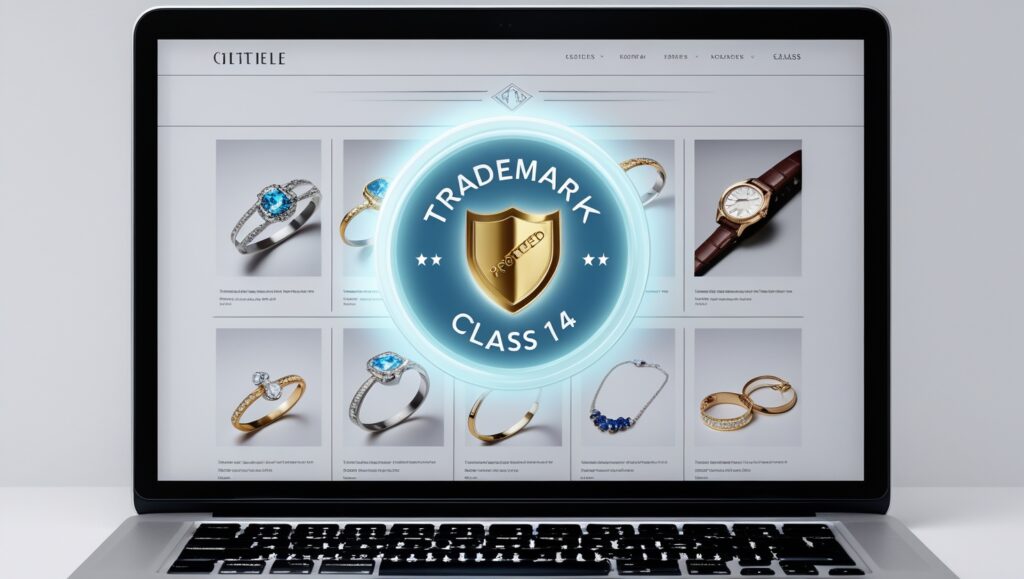
Understanding Trademark Class 14
The NICE Classification (NCL) system categorizes goods and services for trademark registration purposes. Class 14 includes:
- Precious metals and their alloys
- Jewelry and imitation jewelry
- Precious and semi-precious stones
- Horological and chronometric instruments (such as watches and clocks)
Any business dealing in these items must register under Class 14 to protect their trademarks appropriately.
Why E-commerce Jewelry and Watch Sellers Need Class 14 Protection
The digital marketplace is rife with challenges that traditional retail never encountered on such a scale. Here’s why Class 14 is vital in e-commerce:
- Rampant Counterfeiting Online platforms are breeding grounds for counterfeit goods. Without a Class 14 trademark, it’s difficult to get fakes removed or take legal action.
- Brand Impersonation Unscrupulous sellers often mimic established brand names, logos, or taglines to mislead buyers. A registered trademark offers legal recourse.
- Loss of Customer Trust If consumers unknowingly purchase fake products under your brand name, it damages your credibility and future sales.
- Platform Enforcement Major platforms like Amazon, Flipkart, and Myntra require valid trademark documentation to act on infringement claims.
- SEO and Paid Ads Protection Competitors may bid on your brand name in paid ads or use it in SEO content. A registered Class 14 trademark helps prevent unauthorized usage.
Key Benefits of Registering a Trademark Under Class 14 for E-commerce Brands
- Exclusive Usage Rights Registering your brand in Class 14 ensures that only you have the legal right to use that name, logo, or slogan for jewelry and watches.
- Legal Shield Against Copycats Once registered, you can send cease-and-desist notices, file complaints, and take legal action against infringers.
- Increased Brand Value A trademark boosts your brand’s perceived value and attracts more loyal customers, investors, and even potential buyers.
- Access to International Protection Through the Madrid Protocol, you can extend your Class 14 trademark protection to multiple countries as your e-commerce business grows.
- Enhanced Customer Confidence Buyers are more likely to trust and purchase from brands that show legitimacy, and a registered trademark signals authenticity.
How to Leverage Class 14 in Your E-commerce Strategy
- Showcase Your Trademark Display your registered trademark symbol (®) prominently on your product listings, website, and packaging.
- Optimize Product Listings Use your trademark in meta titles, product descriptions, and alt text to boost SEO and increase visibility.
- Enforce Your Rights on Platforms Monitor marketplaces and report unauthorized listings using your Class 14 trademark certificate.
- Create a Brand Story Use your trademark as part of your unique brand identity to create a compelling narrative for your products.
- Monitor Brand Mentions Use tools like Google Alerts or brand monitoring software to keep track of any misuse of your brand name online.
Case Example: How a Class 14 Trademark Saved an E-commerce Brand
Consider “GoldenGlow Jewels,” a startup that sells handcrafted gold and gemstone jewelry online. Within a few months of launching, they noticed duplicate listings on e-commerce platforms using similar brand names.
Thanks to their registered Class 14 trademark, they were able to:
- Get counterfeit listings removed from major marketplaces
- Successfully file a legal complaint against the violator
- Regain control over their brand presence and customer trust
Without this registration, their brand identity and revenue would have suffered.
Trademark Registration Process for Class 14 in India
- Trademark Search Ensure your brand name/logo isn’t already registered by conducting a detailed search on the IP India website.
- Drafting and Filing Application Prepare Form TM-A and file it online with the appropriate fee (INR 4,500 for individuals/startups; INR 9,000 for companies).
- Examination by Registry The Registrar reviews your application. You may receive an examination report asking for clarifications.
- Publication in Trademark Journal If no objection is raised, your trademark is published in the journal for 4 months to invite any opposition.
- Registration Certificate If no opposition is filed or is successfully resolved, you receive the registration certificate.
- Renewal Trademarks are valid for 10 years and can be renewed indefinitely.
Tips to Ensure a Successful Class 14 Trademark Application
- Be Unique Avoid generic or overly descriptive names. Opt for something distinctive that can be strongly associated with your brand.
- Use the Right Class Description Clearly mention the specific goods (e.g., gold necklaces, diamond rings, wristwatches).
- Include All Brand Elements Register not just the name but also logos, slogans, and even product designs if they are unique.
- Monitor After Registration Keep track of potential infringements and renew your registration well before expiry.
- Seek Legal Help Hire a professional trademark consultant or firm to ensure accuracy and completeness.
How Class 14 Helps in Global E-commerce Expansion
Once your brand gains traction in India, you might want to sell internationally. Trademark Class 14 can be extended globally using the Madrid Protocol.
- Apply for international registration through the Indian Trademark Office (IPO).
- Choose designated member countries where you want protection.
- Avoid costly litigations and expand with brand confidence.
E-commerce platforms operating globally (like Etsy, Amazon Global, eBay) often support international IP enforcement if your trademark is registered abroad.
Conclusion
The jewelry and watch industry thrives on authenticity, elegance, and trust—qualities that are instantly eroded by counterfeiting and brand misuse. In the fast-paced world of e-commerce, where hundreds of brands compete for visibility, your trademark under Class 14 becomes a crucial weapon in safeguarding your identity and maintaining customer loyalty.
Don’t let imitators steal your hard-earned brand equity. Invest in a Class 14 trademark today and future-proof your e-commerce success.
Need Assistance with Class 14 Trademark Registration?
At VMK Professionals, we specialize in helping jewelry and watch businesses secure their trademarks under Class 14. Whether you’re a startup or a growing brand, our expert team ensures smooth, fast, and legally compliant registration.
Contact us today to get started on your trademark journey and strengthen your e-commerce brand against infringement.


